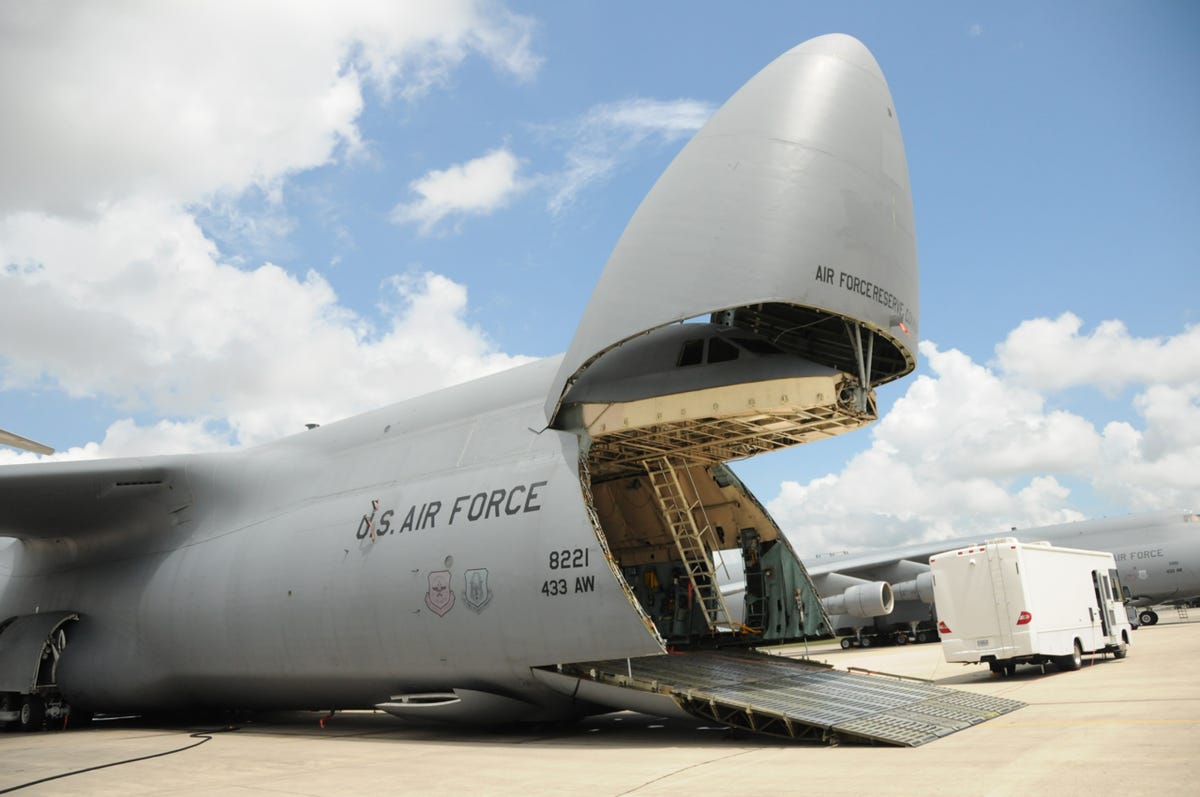How the Air Force hardens planes against signal leakage (pictures)
At Lackland Air Force Base in San Antonio, Texas, the 24th Air Force makes sure communications on each plane the service flies are safe are safe from eavesdroppers. CNET Road Trip 2014 listened in.

The van and the whale
SAN ANTONIO, Texas--When the president of the United States flies anywhere, it goes without saying that he and his entourage want to be sure that any communications being generated on board Air Force One are safe from prying eyes (or ears).
The same is true of communications aboard any Air Force aircraft, and that's why members of the 24th Air Force, based out of Lackland Air Force Base here, work hard to "harden" every plane the service flies, ensuring all communications are safe from eavesdroppers.
As part of Road Trip 2014, CNET reporter Daniel Terdiman traveled to Lackland to see how the Air Force secures its aircraft and their communications from any kind of unintentional leakage.
Working out of a special white RV parked alongside a C-5 -- the Air Force's largest airplane -- technicians demonstrated how they test for leaked signals.
Click here to read my full story on how the Air Force does this work.
Nose up
The Lockheed C-5 Galaxy is the Air Force's largest airplane, a cargo plane capable of being refueled in mid-air. Cargo can be loaded from either the front, or the rear.
C-5
The C-5, manufactured by Lockheed since 1968, has to be "re-glassed," or revamped, after years of service. When that happens, the 24th Air Force has to make sure all its new or reconfigured communications systems are hardened against unintentional leakage.
The RV
The special RV used to monitor communications emissions from Air Force aircraft. The RV can be flown around the world, as the Air Force works to test every aircraft the service flies.
The E
As a demonstration, a laptop aboard the C-5 was set up with this "E" on its screen. The idea was to see if the monitors in the RV could "see" the signal.
Antenna and the laptop
A special antenna was set up alongside the laptop, in order to see whether the signal from the computer could be read in the nearby RV.
Ghost of the E
In the RV, a technician caught an image of the "E," appearing almost ghost-like in a sea of electronic noise. The point was made: the laptop on the plane was not secure enough to be used without stricter security measures.
Monitoring
Two Air Force technicians in the RV monitor the signal coming from the laptop on board the C-5.
C-5 rear upper deck
The double-decker C-5 is 247 feet long, and its upper deck, behind the flight deck, is longer than some other entire airplanes.
Main deck
A look into the lower deck of a giant Lockheed C-5 Galaxy. The plane is said to be able to fit at least six Greyhound buses.
Flight deck
The flight deck of the Lockheed C-5 Galaxy.

